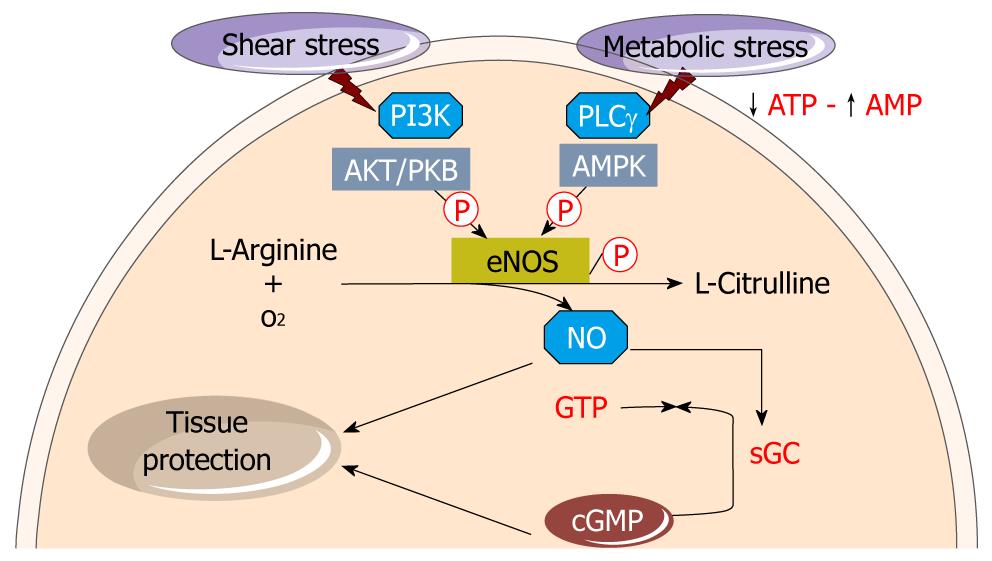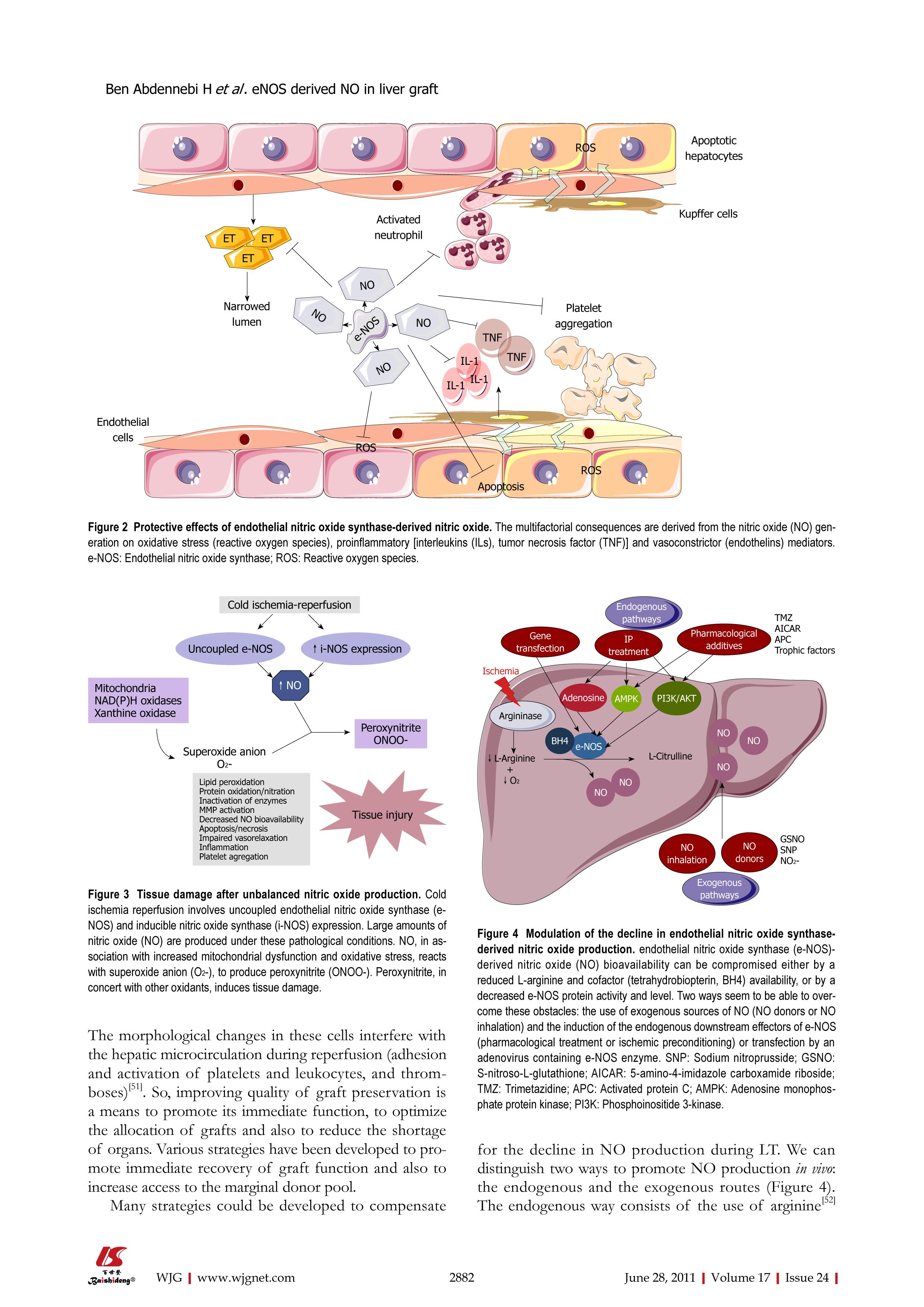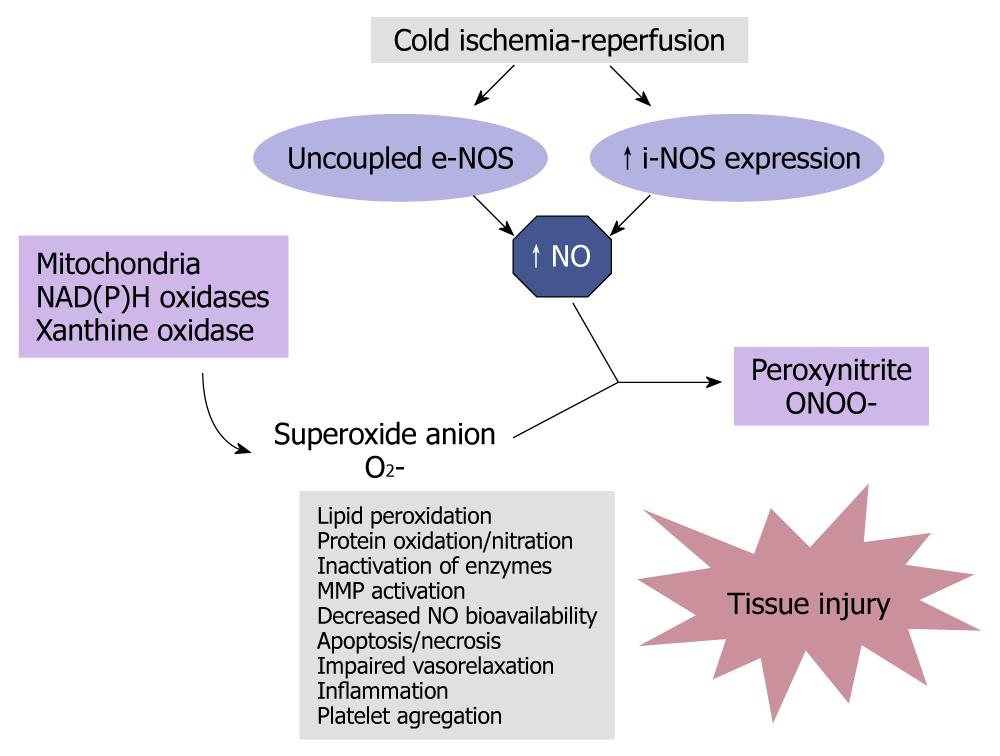Copyright
©2011 Baishideng Publishing Group Co.
World J Gastroenterol. Jun 28, 2011; 17(24): 2879-2889
Published online Jun 28, 2011. doi: 10.3748/wjg.v17.i24.2879
Published online Jun 28, 2011. doi: 10.3748/wjg.v17.i24.2879
Figure 1 Endothelial nitric oxide synthase-derived nitric oxide synthesis.
Shear stress leads to endothelial nitric oxide synthase (e-NOS) phosphorylation and through pathway involving phosphoinositide 3-kinase (PI3K) and Akt. Metabolic stress also phosphorylates e-NOS through the adenosine monophosphate kinase (AMPK) route. The coordination of signalling through these converging pathways allows for e-NOS activation. L-arginine is converted in the endothelium monolayer by the constitutive e-NOS to nitric oxide (NO) and L-citrulline. NO diffuses into both the vessel lumen and the vessel wall, thereby activating soluble guanylate cyclase (sGC) to produce cyclic guanosine monophosphate (cGMP) from guanosine 5’-triphosphate (GTP). NO in concert with cGMP involve tissue protection.
Figure 2 Protective effects of endothelial nitric oxide synthase-derived nitric oxide.
The multifactorial consequences are derived from the nitric oxide (NO) generation on oxidative stress (reactive oxygen species), proinflammatory [interleukins (ILs), tumor necrosis factor (TNF)] and vasoconstrictor (endothelins) mediators. e-NOS: Endothelial nitric oxide synthase; ROS: Reactive oxygen species.
Figure 3 Tissue damage after unbalanced nitric oxide production.
Cold ischemia reperfusion involves uncoupled endothelial nitric oxide synthase (e-NOS) and inducible nitric oxide synthase (i-NOS) expression. Large amounts of nitric oxide (NO) are produced under these pathological conditions. NO, in association with increased mitochondrial dysfunction and oxidative stress, reacts with superoxide anion (O2-), to produce peroxynitrite (ONOO-). Peroxynitrite, in concert with other oxidants, induces tissue damage.
Figure 4 Modulation of the decline in endothelial nitric oxide synthase-derived nitric oxide production.
endothelial nitric oxide synthase (e-NOS)-derived nitric oxide (NO) bioavailability can be compromised either by a reduced L-arginine and cofactor (tetrahydrobiopterin, BH4) availability, or by a decreased e-NOS protein activity and level. Two ways seem to be able to overcome these obstacles: the use of exogenous sources of NO (NO donors or NO inhalation) and the induction of the endogenous downstream effectors of e-NOS (pharmacological treatment or ischemic preconditioning) or transfection by an adenovirus containing e-NOS enzyme. SNP: Sodium nitroprusside; GSNO: S-nitroso-L-glutathione; AICAR: 5-amino-4-imidazole carboxamide riboside; TMZ: Trimetazidine; APC: Activated protein C; AMPK: Adenosine monophosphate protein kinase; PI3K: Phosphoinositide 3-kinase.
- Citation: Abdennebi HB, Zaoualí MA, Alfany-Fernandez I, Tabka D, Roselló-Catafau J. How to protect liver graft with nitric oxide. World J Gastroenterol 2011; 17(24): 2879-2889
- URL: https://www.wjgnet.com/1007-9327/full/v17/i24/2879.htm
- DOI: https://dx.doi.org/10.3748/wjg.v17.i24.2879












